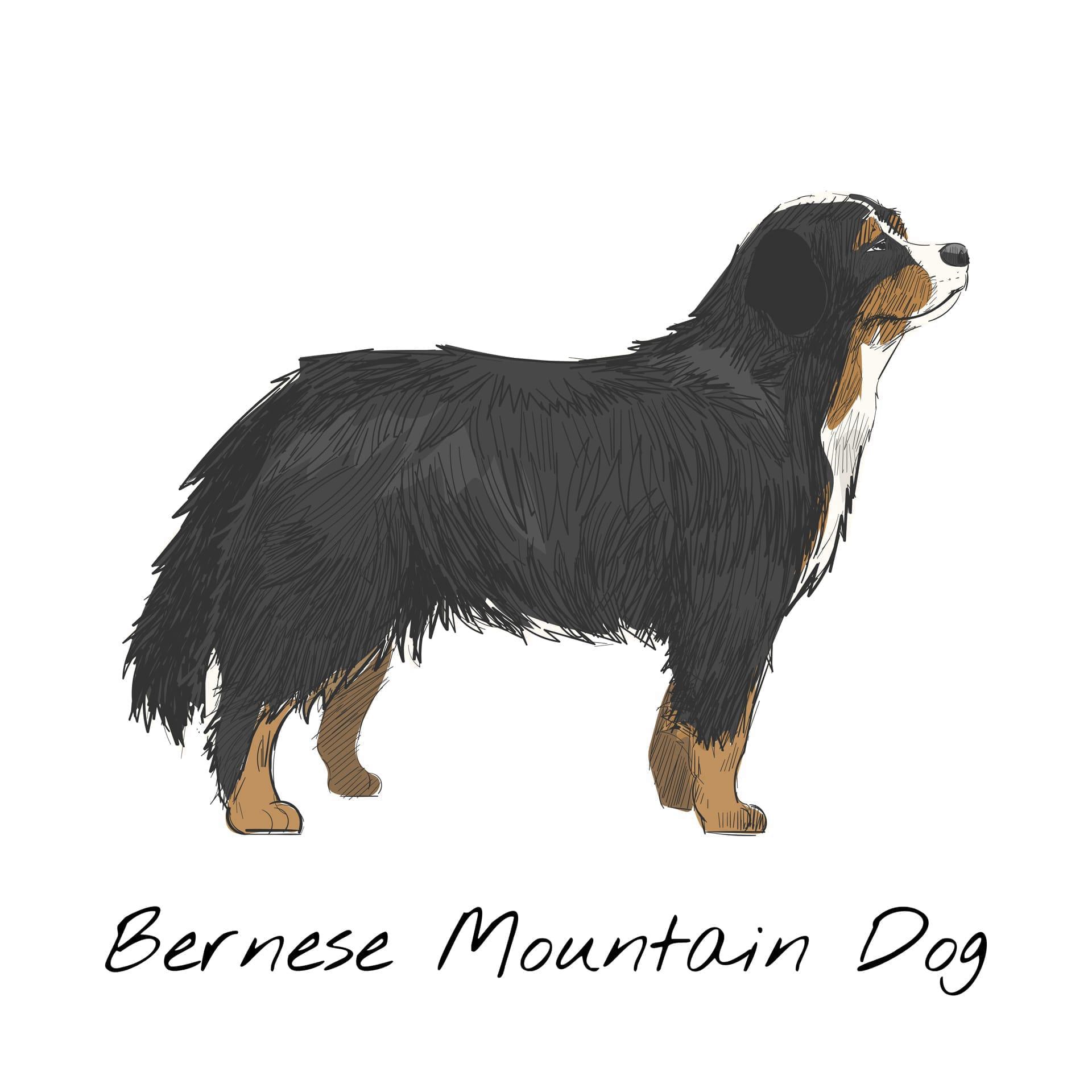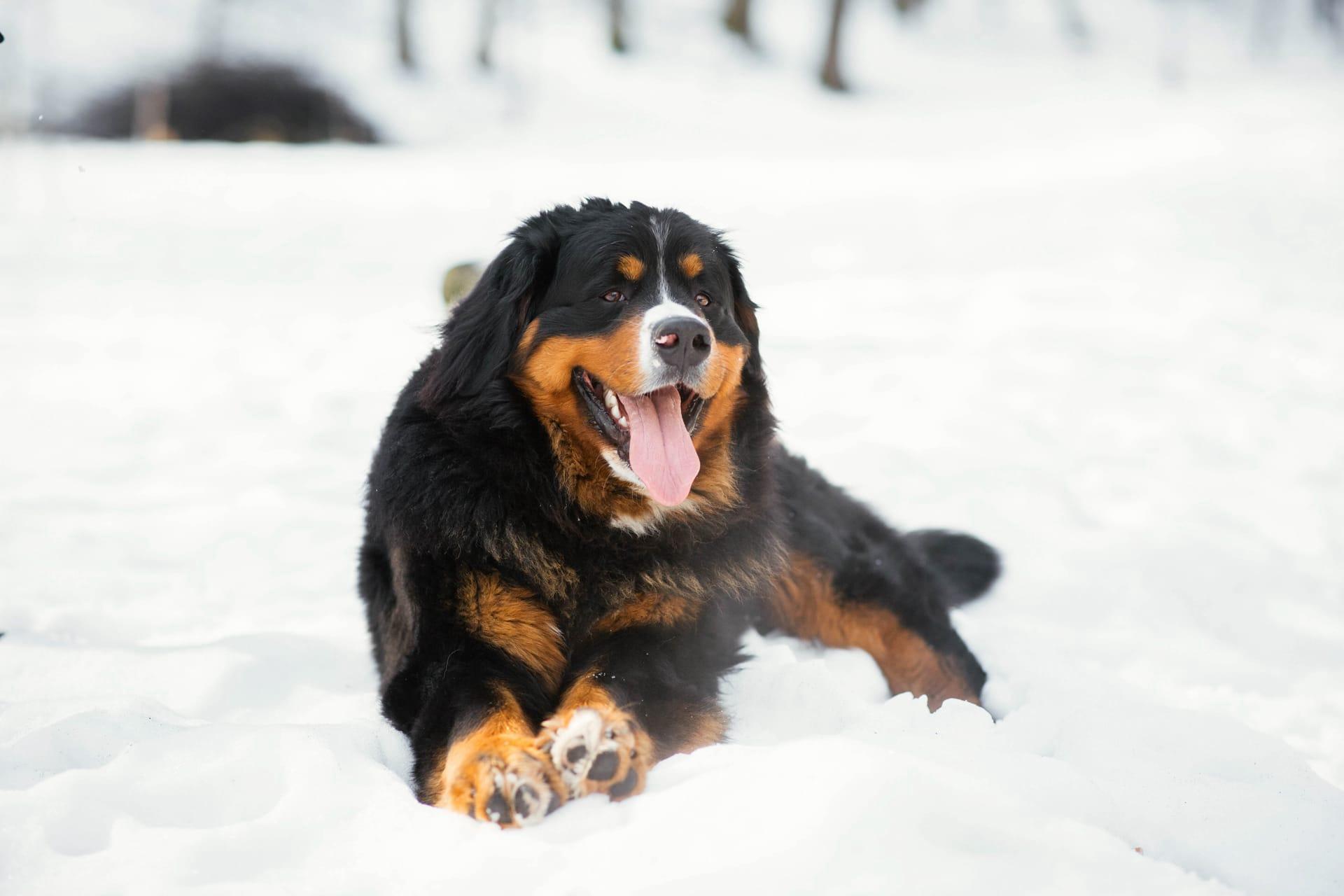1
Bernese Mountain Dogs, known for their majestic appearance, originated in the Swiss Alps, primarily in the region of Berne. Initially bred as farm dogs, their size, strength, and intelligence made them invaluable for herding cattle, pulling carts, and serving as watchdogs. These dogs can weigh up to 115 pounds (approximately 52 kilograms) and stand about 27.5 inches (70 centimeters) tall at the shoulder, showcasing their robust build.
Bernese Mountain Dogs have a distinctive tri-color coat: jet black, clear white, and rust. This lush, long double coat not only serves as a stunning visual hallmark but also provides substantial protection against the harsh Alpine weather. Their coat requires regular grooming to maintain its beauty and health, which involves weekly brushing and more frequent grooming during shedding seasons to manage their heavy undercoat.

2
The lifespan of a Bernese Mountain Dog is relatively short, averaging around 7 to 10 years. This is partly due to their susceptibility to certain genetic conditions such as hip dysplasia and cancer. Their large size also contributes to a shorter lifespan compared to smaller breeds. This fact underscores the importance of responsible breeding practices and comprehensive health screenings for potential genetic issues.
Despite their imposing size, Bernese Mountain Dogs are known for their gentle and affectionate nature, often referred to as "gentle giants." They form strong bonds with their families and are particularly patient and good-natured with children. This temperament makes them excellent family pets, although their size and energy levels require adequate space and exercise to thrive.

3
Bernese Mountain Dogs are versatile working dogs with a history of multi-faceted roles in the Swiss Alps. They were not only used for herding cattle but also excelled in pulling carts due to their strength and endurance. This cart-pulling tradition is celebrated in many countries with carting competitions, where these dogs showcase their natural abilities and training in navigating obstacle courses with carts.
Training and socialization are crucial for Bernese Mountain Dogs from an early age due to their size and strength. They are intelligent and eager to please, which makes them relatively easy to train with positive reinforcement techniques. Early socialization helps in developing a well-rounded dog that is comfortable with different people, environments, and other animals, ensuring they grow up to be confident and sociable adults.

4
The Bernese Mountain Dog's coat color and pattern are so distinctive that they are one of the breed's defining characteristics. The rich black fur, coupled with white chest markings that often resemble an inverted Swiss cross, and rust-colored accents above the eyes, sides of the mouth, and on the legs, are hallmark traits. This striking appearance not only made them popular as farm dogs in Switzerland but also as sought-after pets worldwide.
Despite their heavy coats, Bernese Mountain Dogs are known to enjoy outdoor activities, especially in cooler climates. Their thick fur offers protection against cold temperatures, making them ideal companions for outdoor adventures in snowy or mountainous regions. However, they are prone to overheating in hot weather, so it's important to provide them with shade and water and to avoid strenuous exercise during the hottest parts of the day.

5
Bernese Mountain Dogs have a strong pack mentality and thrive on companionship, both with humans and other animals. They do not do well in isolation and can develop separation anxiety if left alone for extended periods. This breed's social nature makes them excellent additions to active households where they can be part of daily activities and family events.
Their intelligence and eagerness to learn make Bernese Mountain Dogs suitable for various canine sports and activities, including obedience, tracking, and agility. Their versatility and willingness to work alongside their owners also make them effective therapy dogs, providing comfort and support in hospitals, schools, and nursing homes. Engaging them in these activities not only keeps them physically fit but also mentally stimulated, enhancing their overall well-being.